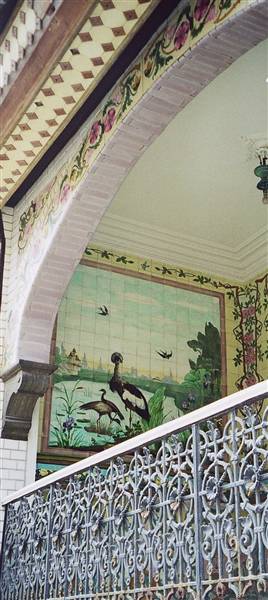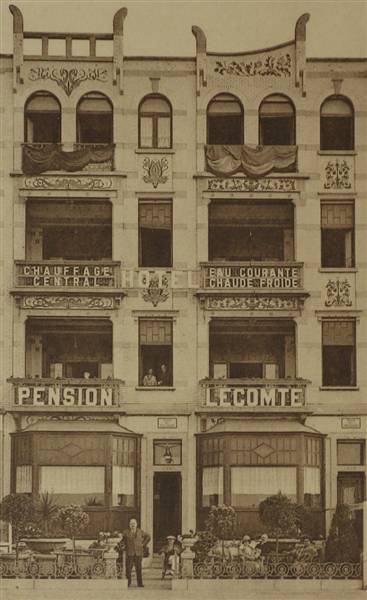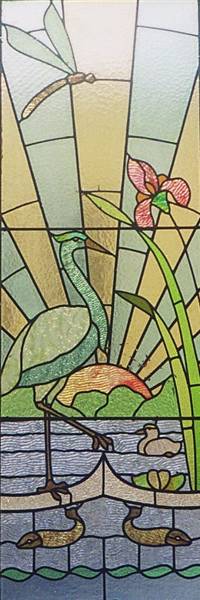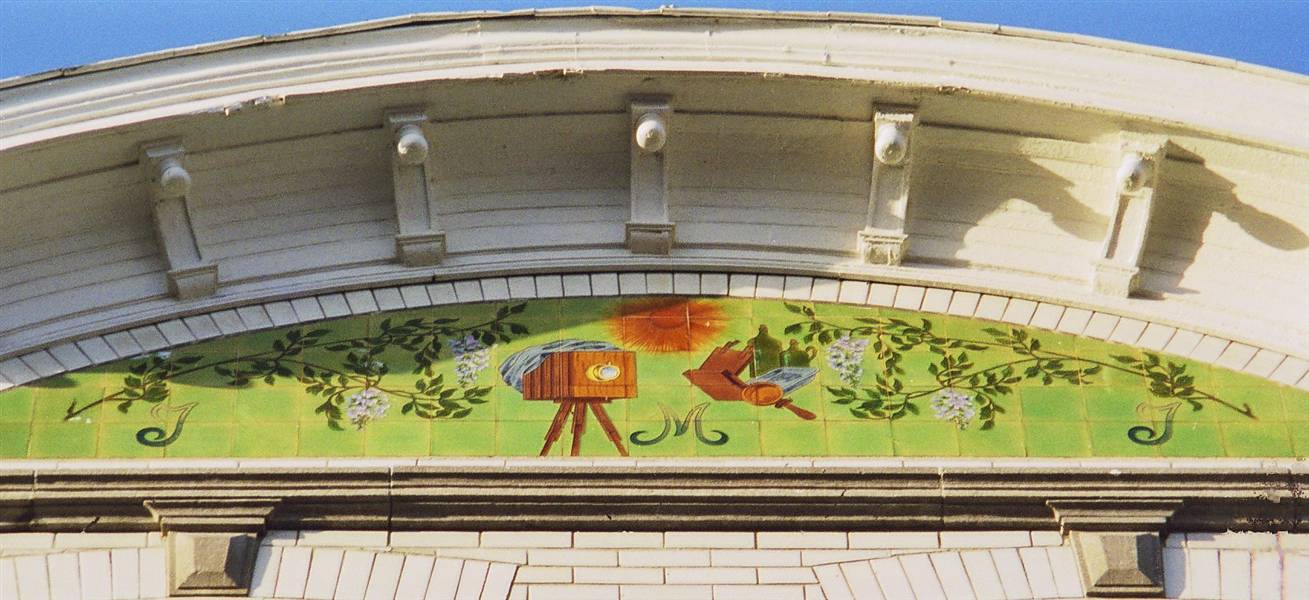ART NOUVEAU IN BLANKENBERGE

I guess you were a bit surprised when you read the heading of this website? Art Nouveau in Blankenberge?
Blankenberge, isn’t that a bustling Belgian seaside town known for its sandy beach and inviting shopping centre?
Yes, it is all that, but it is also much more: so join us on our quest for ART NOUVEAU in Blankenberge and be enthralled!
No Horta or Van de Velde here.The local architects came up with their own ideas to fulfil the wishes of their clients and to transform Blankenberge into a flourishing seaside resort.
Full of colour and swinging, both a little naïve and a wonder of quality and technique.
Do come and have a look!
Situation
The period of the Belle Époque saw a massive explosion in tourism for Blankenberge. Rich tourists wanted their own residence at the seaside. Owning a villa named Sans Souci , Claribella or Les Goëlands at the sea front was quite the ‘in’ thing to do;moreover, it gave you the opportunity to enjoy the healthy sea air.
Until 1900 it was customary to build in neo styles, and it was trendy to adorn your façade with a mixture of style elements. The seaside villas with their typical covered terraces on the bel etage stretched along the Zeedijk, the streets around the church of Saint Roch and the Avenue Rogier.
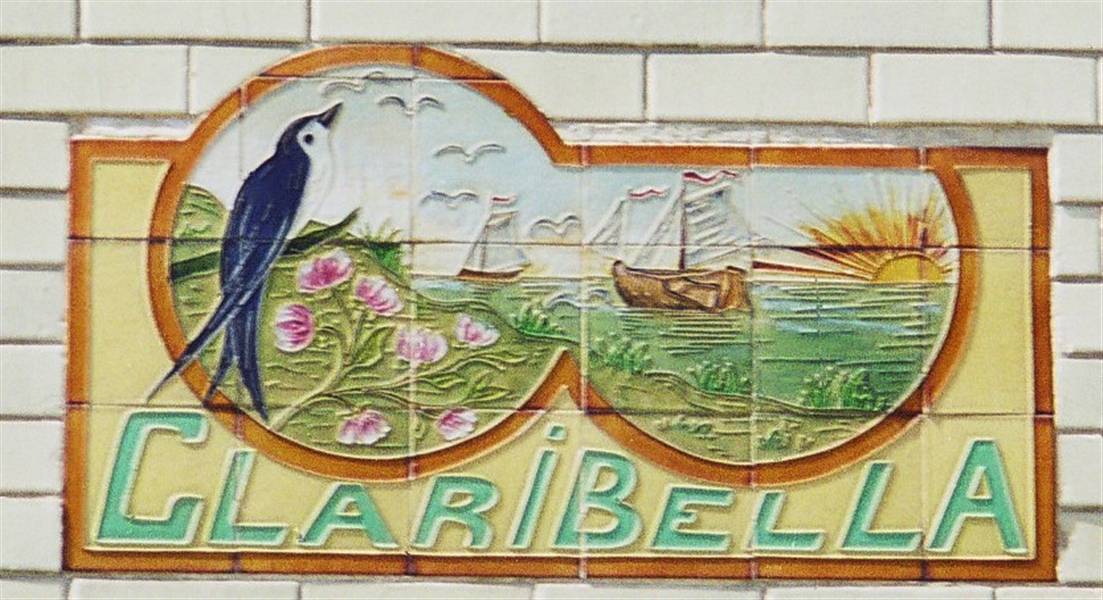

References to residences in Art Nouveau style first appear in the archives from 1901 onwards. Tourists and well-to-do citizens soon came to like the elegance and colour of the Art Nouveau and the architects rushed to comply.
Very typical of the Art Nouveau heritage in Blankenberge is the use of glazed ceramic material for wall coverings: easy to maintain, hygienic and weather-proof (our maritime climate can be very fickle).
From 1908 onwards a strictly geometrical Art Nouveau style of German and Viennese origin makes its appearance in the streets of Blankenberge next to the more traditional curved ‘whiplash’ lines.
As you can see: there’s something for everyone!
AN project Blankenberge

In the spring of 2000 the Vriendenkring Stadsgidsen Blankenberge (Blankenberge City Guides and Friends) started to draw up an inventory of the Art Nouveau heritage in the town. The abundance of material found on this quest, together with archival evidence and the advice of experts, allowed them to hold an informative evening seminar, a weekend and a fortnight-long exhibition. A new Art Nouveau Walk (together with VTB-VAB) and Art Nouveau brochure complemented these events.
Since 2002 more than 7,000 people have walked the Art Nouveau route. Guided through Blankenberge by dedicated guides they discovered, to their delight, a totally new and unexpected town.
The Art Nouveau project of the Vriendenkring Stadsgidsen Blankenberge association was awarded a prize twice: first as the laureate of an appeal for projects relating to the Year of the Volunteer by the Flemish Community, and then as the winner of the Ford Prize for Culture. The association invests this prize money in promotion, maintenance and restoration of the Art Nouveau heritage in Blankenberge.

AN architects in Blankenberge

The first private house and shop in Blankenberge in Art Nouveau style was built by the architect Theobald Van Hille. His fellow citizen Raoux followed his example and the Brussels architect Emiel Hellemans too, built an Art Nouveau dwelling along the sea front in Blankenberge. Local architects followed the trend and soon their creations embellished the streets of Blankenberge. The architects Felix Cosman, Jules Heyneman, Alfred Neirynck, Jos De Groote and contractor Emile Cattoor all contributed with some very remarkable buildings. In this group Jules Heyneman is by far the most versatile: he alone in Blankenberge also built in unadulterated geometrical art nouveau style.
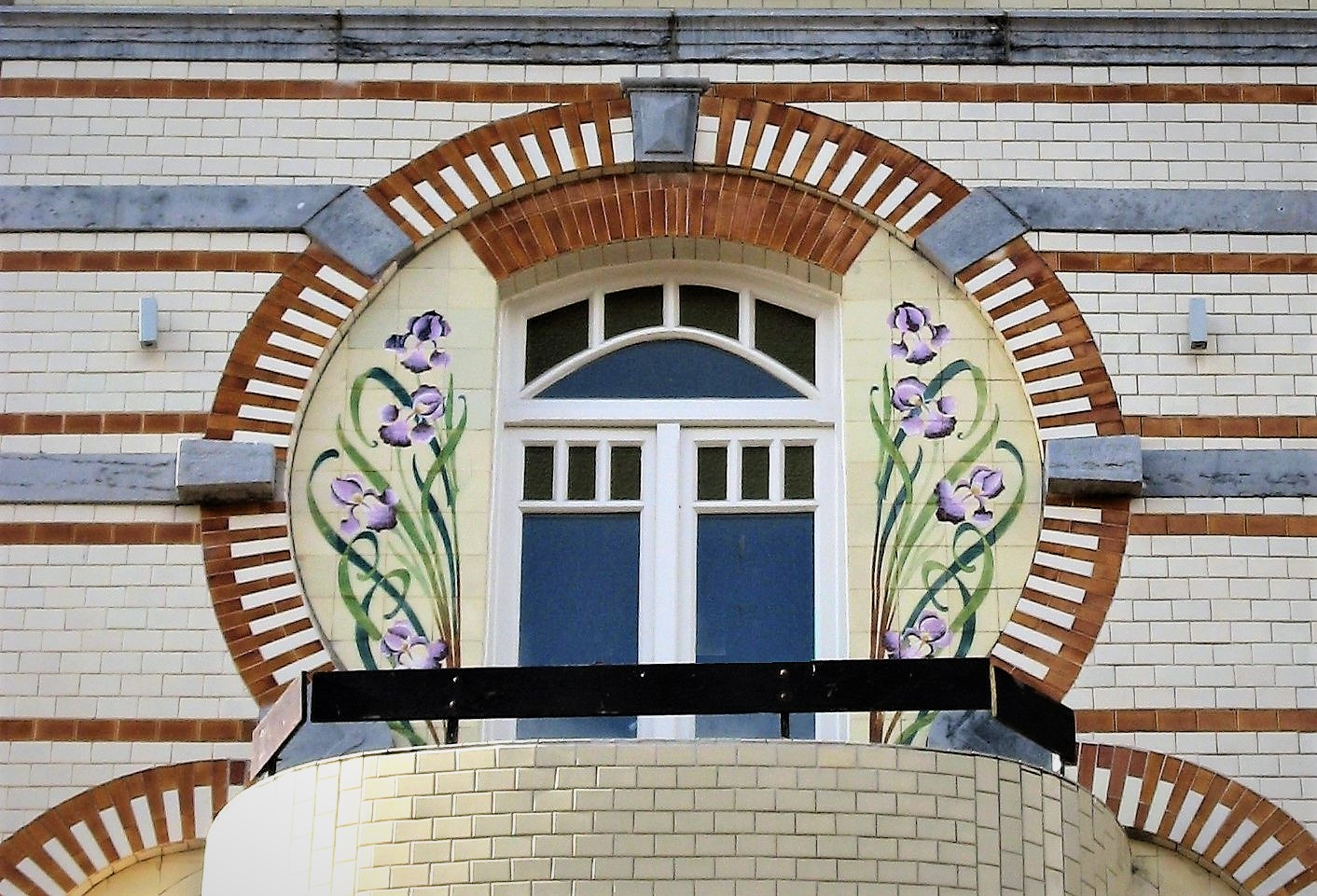
Applied arts
Building in Art Nouveau style meant using beautiful materials, ensuring perfect workmanship and creating a unity between building and design. Flamboyant carpentry may have all but gone, yet intricate ironwork and cast-iron balustrades can still be seen.

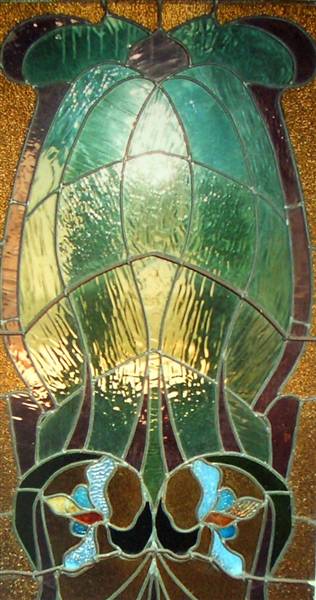
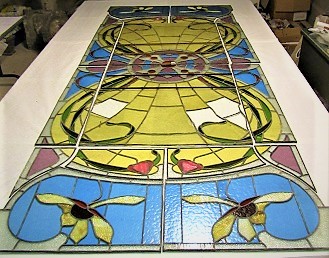
Exquisite stained-glass windows still adorn interiors, and sometimes, but very rarely, even wall decorations escaped demolition. National Heritage Day (Open Monumentendag) offers a unique opportunity to admire the grandiose oeuvre of many nameless craftsmen.
Beautiful ceramic floor tiles are legion and Art Nouveau wall tiles in Blankenberge are a world of their own.
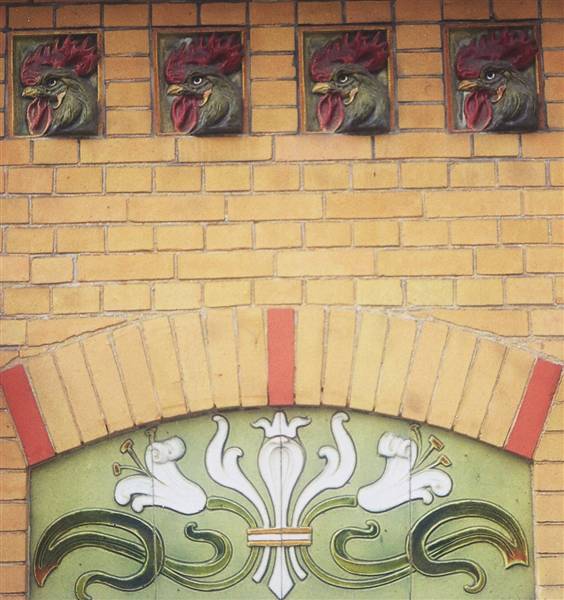

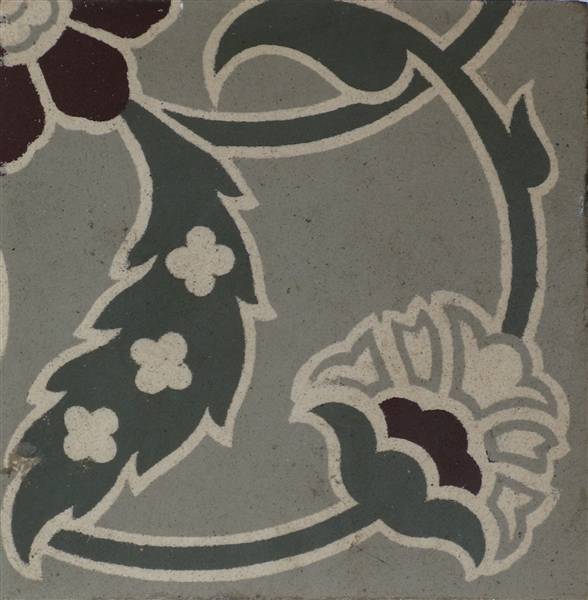
AN wall tiles
Around the middle of the 19th century new techniques revolutionized the English tile industry. The same happened in Belgium. From 1897 onwards the Manufacture de Céramiques Décoratives d’Hasselt set up a huge publicity campaign to promote the use of ceramic material in the building industry. Together with Boch Frères in La Louvière, Helman in Sint-Agatha-Berchem and Gilliot in Hemiksem they made Belgian wall tiles world famous.
As wall tiles proved to offer a lot of practical advantages they were more and more used, certainly in the period 1905-1914. Within the built-up city centre of Blankenberge colourful tableaux began to adorn the façades of the terraced houses.
All major factories were represented on the walls, including some from France and Germany. Floral motifs were by far the more popular, next to nature scenes with birds and seascapes. Shopkeepers displayed big advertising posters.
Modest little friezes, everyday street-signs or big arches and imposing tableaux, they all can be seen in Blankenberge. Although many houses could not escape demolition, Blankenberge can still boast a considerable number of Art Nouveau artefacts. The importance of the wall tile heritage in Blankenberge was recognized when the most important dwellings with art nouveau wall tiles were declared protected monuments in 2003.
Wall tile expert Mario Baeck was able to identify a large number of wall tile creations and thus contributed to opening up this unique heritage to the public. He summarized some of his ideas in his speech at the Art Nouveau Exhibition in Blankenberge in 2001 as follows: “I would like to emphasize here, in this forum, the importance of the rescue and preservation of this unique heritage. Numerous examples abroad – Paris, London, Glasgow, Dresden – show that this big concentration of high quality wall tiles could represent a commercial and tourist asset. The authorities here would be well advised to treat the few still intact ensembles of Art Nouveau architecture with the utmost care and to preserve them in situ. If that is not possible they should be dismantled and given a place in museological surroundings.”
For more pictures click here.
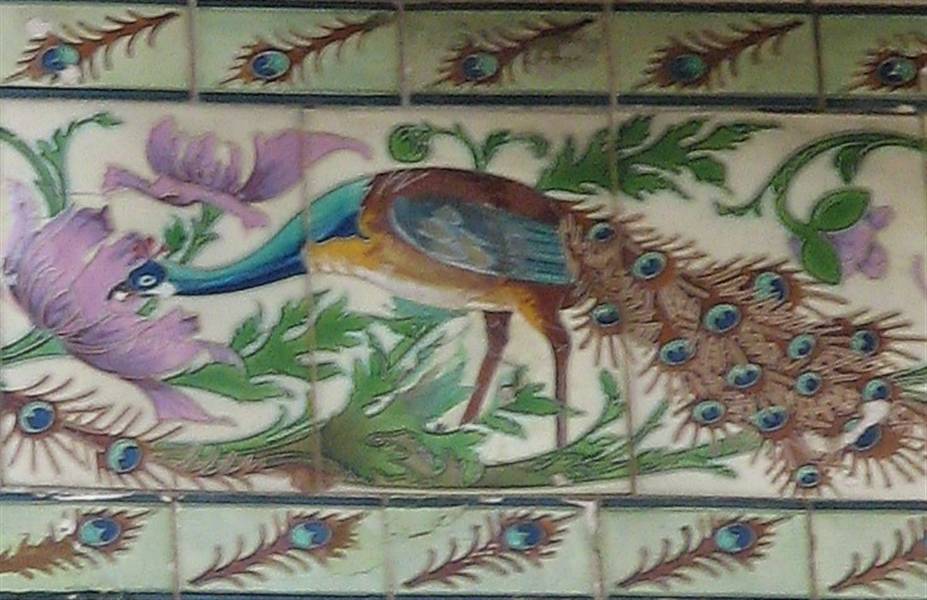

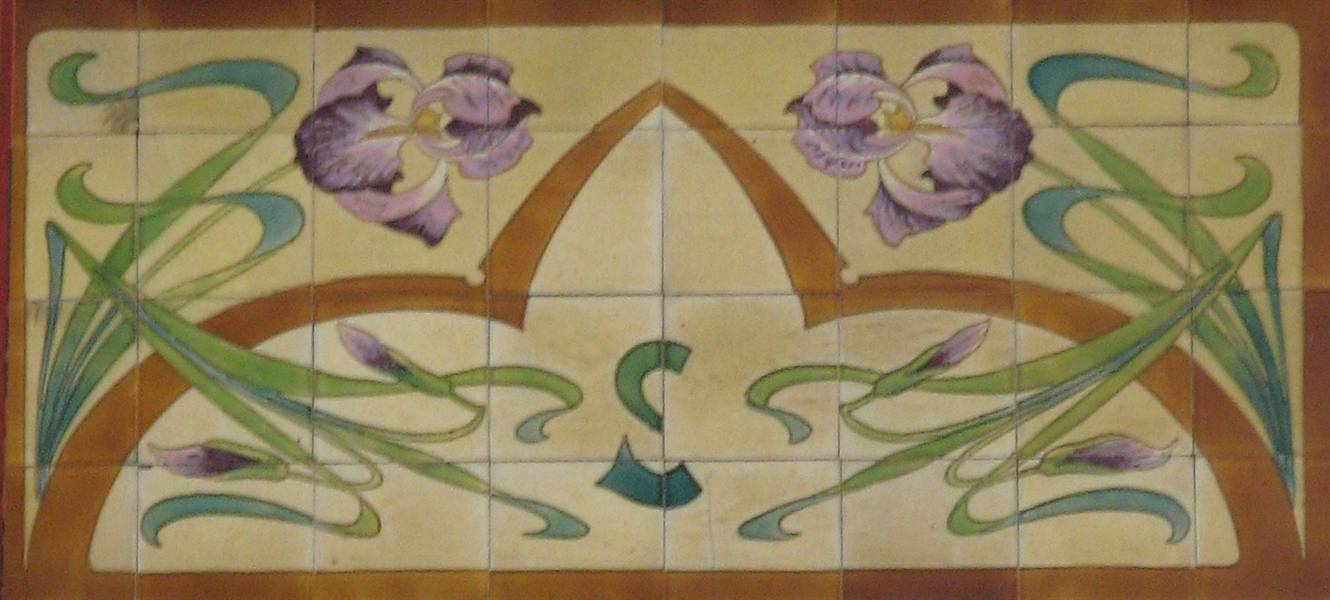
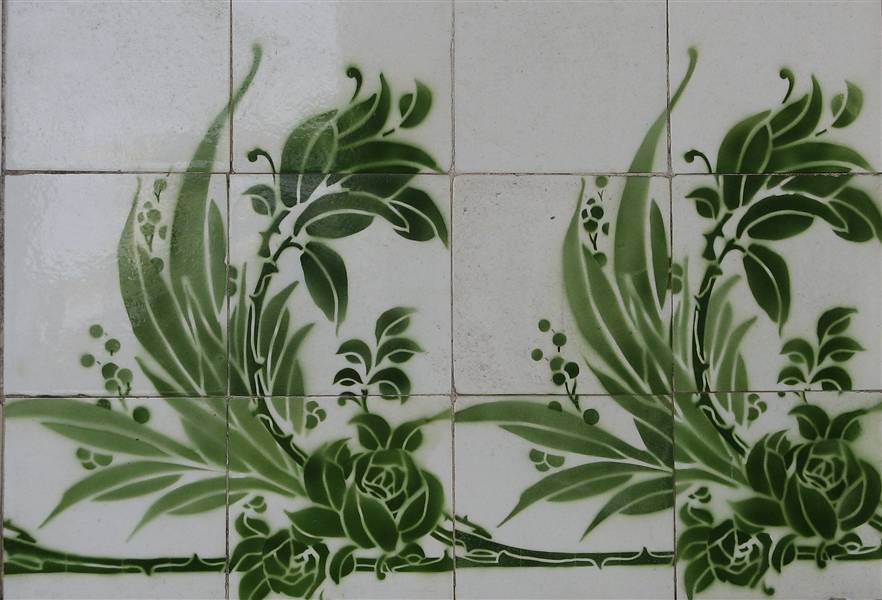

Publications
De Belgische art nouveau en art deco wandtegels 1880-1940
Mario Baeck en Bart Verbrugge
Brussel, 1996
Ministerie van Vlaamse Gemeenschap, Afdeling Monumenten en Landschappen
Het gebruik van polychrome bouwkeramiek in de kuststad Blankenberge 1890-1925
Mario Baeck en Pol Vanneste
In: Monumenten & Landschappen 23/5, sept.-okt. 2004
Jules Heyneman, Uitkerkenaar en veelzijdig architect
Alberta Van Asbroeck
Blankenberge, sept 2006
VSB vzw.
Badplaats in stijl.
Jos Vandenbreeden, Dirk Decoster, Alberta Van Asbroeck, Mario Baeck, Cis Kennes
Lannoo Tielt, 2014
Autonoom Gemeentebedrijf Blankenberge, Belle Epoque Centrum, Vriendenkring Stadsgidsen Blankenberge vzw
Brochures
You can buy them at the Tourist Info Point, Hoogstraat 2 and in the Belle Epoque Center, Elisabethstraat 24. Price €2.50. You can order by post at vsb.vzw@gmail.com, provided you pay the postage costs.
Art Nouveau wandeling door Blankenberge
Vriendenkring Stadsgidsen Blankenberge vzw
Edition april 2021
Art Nouveau Spaziergang durch Blankenberge
Vriendenkring Stadsgidsen Blankenberge vzw
Edition april 2022
Art Nouveau à Blankenberge
Vriendenkring Stadsgidsen Blankenberge vzw
Edition juin 2021
Art Nouveau Walk in Blankenberge
Vriendenkring Stadsgidsen Blankenberge vzw
Edition april 2022
Guided tours
Guided tours with an Art Nouveau guide can be requested at the Belle Epoque Center T+32(0)50 636 640 or via belle.epoque@blankenberge.be
